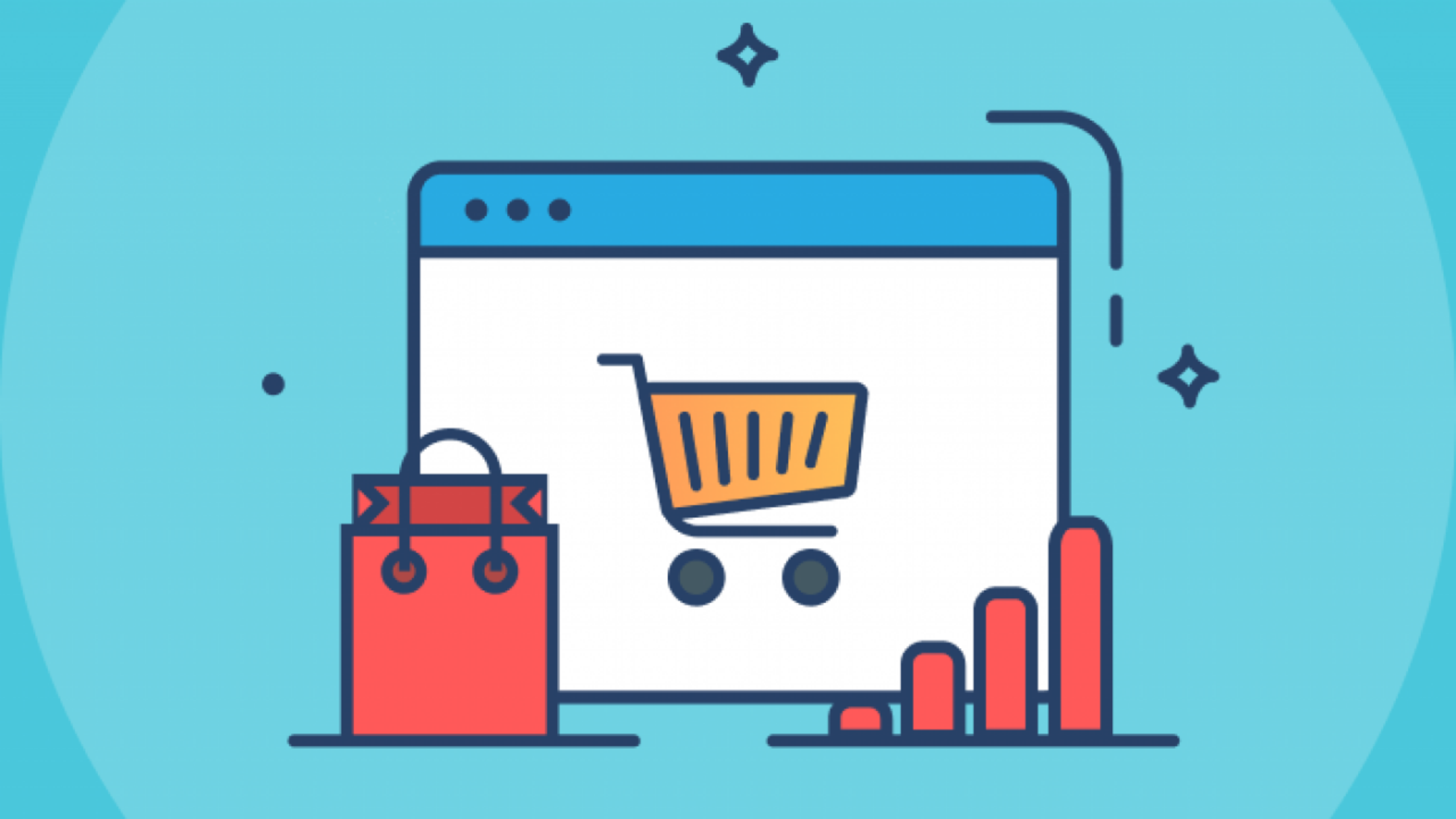Having an efficient eCommerce site is a dream for all the entrepreneurs looking out for a future in eCommerce. You might as well have a killer idea in your mind for your dream project. If so, you must be tempted to launch it as soon as possible.
Let’s face the reality, selling online have become competitive like never today. Especially in 2022 when eCommerce will be on a complete boom. When the market is full of tempting solutions to start your eCommerce site in a snap of fingers, a temptation to choose any of them and kick-start your business is understandable.
8 Key techs required to build an eCommerce site in 2022 Share on XBut hold your horses now. Having an eCommerce site is not that easy as it seems. The reality of selling online is not in a “hurry to make a decision” but in getting the appropriate website that takes some time, effort and investment.
Related articles: 10 Key Factors To Position Your Ecommerce Online Store
Here in this article, we shall look into 8 key techs and factors about whom you should know before you start actualizing your dream project. From your site’s software requirement to the hardware required, and from product management to making your first sale, everything depends on these aspects. So let’s just dive in without a much ado.
Technologies required for an eCommerce website development
There are so many things that are required to develop a complete eCommerce website. You must include the considerations for both the software and hardware in your business plan.
1. The hosting solution
A hosting solution or so called a Web Server is a platform where all of your site’s files (HTML, CSS, JS, PHP, Database, media) are stored. Once your files are on a web-server, the site becomes live and available for your customers.
Well, this point could have been listed at the last, as it is required once your website developed and ready to get deployed. However, developing an eCommerce site is not a quick job, it’s time taking. So, most of the times, even the development can be done on a hosted environment to make your project accessible from anywhere. That’s why I have included this point at the beginning itself.
The web-servers run on Linux or Windows Operating Systems, which are specifically designed for servers only. They are different from the regular Windows and Linux on your computers. The website owners pay the web-servers owners to host their website on their secure host. Depending on the size of your website you can choose a Shared or Dedicated server for your website.
Shared: Other websites will also be hosted on the same server. It is generally meant for small sized websites which will run smoothly in a shared bandwidth.
Dedicated– Only your website will be hosted on that particular server. It is faster than the shared servers and meant for the larger websites which require large bandwidth.
This brings me to my next point.
2. The eCommerce software platform
Choosing a web server for your website also depends on a very crucial decision- choosing the eCommerce platform itself. The eCommerce platforms are basically the software environment upon which your eCommerce store is developed, customized, and personalized as per your requirement.
For time being, you will need to decide which kind of eCommerce platform you are going to use- Hosted or Self-Hosted?
Hosted eCommerce platform– The eCommerce platform and Web-Server for hosting are provided by the same company or a partner company. For example, the hosted solution for PrestaShop is provided both by the PrestaShop Cloud and Microsoft Azure.
Some top hosted eCommerce platforms are:
- Shopify
- BigCommerce
- Volusion
- Big Cartel
- PrestaShop (Also available for self-hosting)
Self-hosted eCommerce Platform– You have the freedom to choose your favorite web-server to host your eCommerce website. For example, you can choose Magento as your eCommerce platform, and host your store on any web-server you want.
Some top self-hosted eCommerce platforms are:
- Magento
- WooCommerce
- PrestaShop (Also available in hosted solutions)
- OpenCart
- Spree Commerce
- osCommerce
3. Server Software for your web-server
Right after choosing the web-host you must choose the server software that you are gong to use for your development. A server software is installed on a web-server which manages the serving of different information to the users on request.
When a user makes a request on your website through the web browser, the web-server processes that request and serves the correct file to the client. Which is then shown to the user on the web browser.
There are various server software used by the web-servers which include:
- Application Software
- Database Server
- File Server etc.
The most popular web server software that you can use are Apache and Windows IIS. Most of the web hosts already have these software pre-installed on their servers. So, you have to just choose which one you want to use.
4. Database System for your development
The database is a very important part of your eCommerce website. For everything that happens on your site, you need a software that manages the storage and serving of the information. A database is basically used to store the information about your website.
It will have the information about your customers, products, prices, description, images, sales, transactions, shipping, contact etc.
Related articles: Importance Of Videos For Your Ecommerce
The eCommerce website should be programmed to store as well as fetch the information stored in a database.
For example, you can program using PHP script to store and fetch the information stored in a MySQL database. The type of database software you use for your development depends on the programming language you are using.
5. Secure Networking
For networking the TCP/IP protocols are used which define how different computers and devices connected to the internet will communicate and share the information with each other. These protocols determine how secure is your website from data breaches and other security risks.
The TCP (Transfer Control Protocol) has various types, some of them are HTTP, HTTPS, and FTP. Every information sharing and everything that happens on the internet is controlled by these protocols only. For example, FTP protocol manages the Uploading and Downloading of files over the internet and any network.
The HTTP protocol defines the communication between the Sever and web browsers. The “S” in the HTTPS protocol stands for “Secure” which adds an extra layer of security in the communication channel between the web browsers and the servers.
So, for your eCommerce website, make sure you have the SSL (Secure Socket Layer) and TLS (Transport Layer Security) protocols on it. The SSL and TLS certificates are required to use these secure protocols. Once you have an SSL certificate, your eCommerce store will be secured with HTTPS.
The website should have a perfect SSL that fits with its domains’ requirement. If the website needs to secure unlimited subdomains, then a single cheap wildcard SSL is an ideal option for website security. It can secure primary domains along with subdomains in a hierarchy with strong and same level security standards.
6. Browser compatibility and Mobile responsiveness
A web browser is used to request, fetch and display the content to the user on his/her device. The web browsers today are not only there on computers but also on Mobile and Tablet devices. Some top web browsers used by most of the users these days are:
- Google Chrome
- Mozilla Firefox
- Internet Explorer
- Edge
- Safari
- Opera
All these browsers have a separate version for Mobile and Desktops. While developing your website, it is a top concern to test it on all these popular web-browsers. You don’t want your website to run into the compatibility problems on any of these platforms.
Moreover, also make sure the website is responsive on the mobile devices as well. It is really important as the number of requests coming from mobile devices today has almost crossed the number of requests coming from desktops. Users are using their mobile devices for most of their eCommerce shopping, and trust me, you don’t want to loose any such customer with a non-responsive website.
7. Automatic Backup system
While at the development or when your website is live and running on full fledge, accidents do happen. Even with the best eCommerce platforms, best web host, you might run into the situations when you might accidentally delete a file, or make some irreversible error.
In such situation, a routine backup is all you need. From all the site’s files to the complete database, you need to backup everything. These backups with you will allow a swift recovery from even the most catastrophic situations. Just imagine, if you have the backups from the very beginning itself, how convenient it would be for you to recover from any kind of error, mistake, accident or mishap.
Take the following considerations while implementing a backup system:
- Keep it automatic: You might always not have the time to take the backups regularly. The systems with the automatic backup will ensure a regular collection without your manual involvement.
- Full Backup: Ensure you have the backup of everything from your site. From Files to Database, backup
- Cloud backup: Always have multiple places to save your backup. In addition to your server, save the backup on the cloud as well. Popular cloud storage that can be used are Google Drive and Dropbox.
8. Domain Name and business security
According to what most of us have been thinking about domain names, they are just the unique phrases in the URLs that give your website a unique identification.
But there is a very crucial risk associated with the domain names as well. If your business becomes successful, the chances of stealing your sales and business increase with it using the similar domain names.
Just imagine, you have registered your domain name as “yoursite.com”. Now when your business becomes successful, another business might register a domain similar to yours, let’s say:
“yoursite.net”
“yoursite.uk”
“yoursite.co”
“yoursite.in”
All these domain names look very similar to each other. If someone registers on any of these, you will have a real hard time differentiating yourself in the market.
Related articles: 5 Advantages Of Ecommerce For Small Businesses
Furthermore, if someone chooses to be nasty and copies your whole website design in addition to your domain name, you will have more than just a hard time to even save your sales and business from getting stolen.
The best solution is to register your domain name on multiple domains like .com, .net, .in, .uk, .org, .co etc. By doing this you can ensure that no one can register a domain name similar to yours and steal your business by copying your website.
A Quick Summary
All the techs mentioned here brings us to the following compacted list of choices:
- For front-end development: HTML, CSS, JavaScript, Ajax, Jquery
- Server-side Scripting: PHP, ASP, JAVA etc
- E-Commerce platform: Magento, WordPress, PrestaShop, OpenCart
- Database:MySQL, MSSQL
Once you have an understanding of what techs are required to build an eCommerce site, you will have an idea of what needs to be done in each step. Whether you are doing all by yourself or hiring an eCommerce development company, you should know about the actual happenings so that you can make informed decisions.





